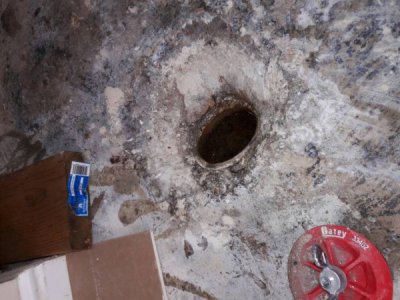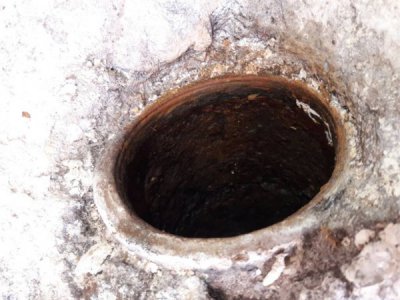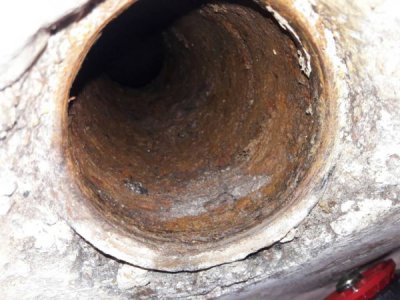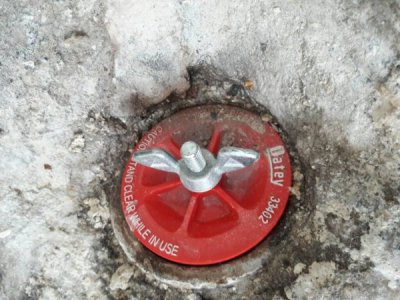This is probably an odd question for a machinist forum, but we have such a broad range of professions and experiences covered in this community that I can't think of a better place to ask this. First the requisite background info...
I'm renting a home. Last February the sewer backed up, flooding the basement bathroom and my home office. The final sewer washout location in the home is, for some reason, in the floor of that office. The plumber who came and snaked all the way out the foundation and to the city's line (retrieving an impressive rootball in the process) used that washout for that job, because the screwy plumbing didn't line up right to let him use the open toilet drain instead. In the process the threads of the old brass fitting were damaged, so after he left and I cleaned up the filthy residue I was unable to replace the plug because I couldn't get the thread to start.
It's an odd size plug. 3.5"? Something like that. The plumbing supply place didn't have a universal plug (the expanding rubber variety) that fit (1950s construction). The landlord bought the closest size and I added a couple coils of thin rubber sheeting to increase the size, thinking that once it was expanded in place it would form a good enough seal for that low pressure drain pipe application.
I was wrong. There is now a puddle right there.
View attachment 138910
I'm taking the day off work to get my office moved out, once again remove the carpet and pad, and all that. The plumber and I both recommended that the line be scoped last time and the landlord cheaped out. I will insist this time, as this is becoming a serious problem. It's almost certainly a broken sewer line in the yard. Just saying because I'm confident that the knowledgeable and helpful people of this forum would encourage me to get it scoped, and I don't want that part of this to distract from the real question:
How do I fix the threads so I can put the brass plug back in?
Even if a tap for that size exists, there's no way he will pay for it. Since it's not a size that can be found readily at plumbing supply places I'm confident the mechanical contractors I could call won't have one. And the fitting is buried in the cement, so the lathe is not an option.
What are my options? I'm wondering about maybe brazing in a new fitting in a slightly smaller but standard size, within the old one. Other than the fact that it is wet and dirty (frustrating but manageable challenge) do you see any reason why that wouldn't work?
Any other ideas?





